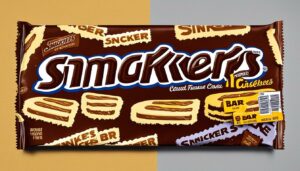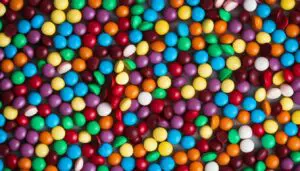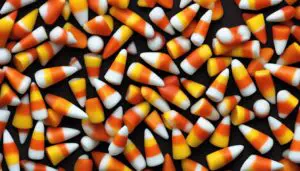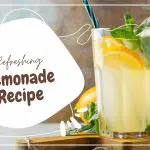Originally posted on February 10, 2024 @ 5:25 am
In recent months, there has been a lot of speculation and discussions online about whether Skittles, the beloved candy manufactured by Mars, has changed their recipe in 2022. Rumors and allegations have circulated regarding possible changes to the ingredients used in Skittles, particularly related to the controversial use of titanium dioxide as a color additive.
While some have claimed that Skittles now include new ingredients or have altered their recipe, it is important to separate fact from speculation. Mars, the company behind Skittles, has responded to these allegations, stating that they have not made any changes to the recipe and that all ingredients used in Skittles continue to comply with FDA regulations.
One of the main concerns raised by consumers and advocacy groups is the use of titanium dioxide in Skittles and its potential health risks. Titanium dioxide, a white, powdery mineral, is commonly used as an artificial color additive in various consumer products, including food. It has been accused of being a “known toxin” and a “known carcinogen” by some individuals.
However, it is important to note that the use of titanium dioxide in food products is legal in the United States, and the FDA maintains that its regulated use as a color additive is safe under certain conditions. Nevertheless, the safety of titanium dioxide remains a topic of debate, with some countries in the European Union banning its use in food products due to potential health risks.
Contents
- 1 The Skittles Titanium Dioxide Lawsuit
- 2 Understanding Titanium Dioxide
- 3 Titanium Dioxide in Other Products
- 4 Health Concerns and Regulations
- 5 Titanium Dioxide in Skittles and Other Foods
- 6 FDA Regulations and Limitations
- 7 Consumer Choices and Concerns
- 8 Conclusion
- 9 FAQ
- 9.1 Did Skittles change their recipe in 2022?
- 9.2 What is the Skittles titanium dioxide lawsuit about?
- 9.3 What is titanium dioxide?
- 9.4 Where else can titanium dioxide be found?
- 9.5 Are there health concerns related to titanium dioxide?
- 9.6 Is titanium dioxide in Skittles and other foods?
- 9.7 What are the FDA regulations on titanium dioxide?
- 9.8 How can consumers reduce their exposure to titanium dioxide?
- 9.9 Did Skittles address the titanium dioxide controversy?
- 10 Source Links
Key Takeaways:
- Rumors regarding a recipe change in Skittles in 2022 have led to discussions and speculation.
- Mars, the manufacturer of Skittles, has stated that they have not made any changes to the recipe.
- Titanium dioxide, a color additive used in Skittles, has raised concerns about health risks.
- The use of titanium dioxide in food products is legal in the United States, but some countries have banned it.
- The FDA maintains that the regulated use of titanium dioxide is safe, while others call for increased scrutiny and regulation.
The Skittles Titanium Dioxide Lawsuit
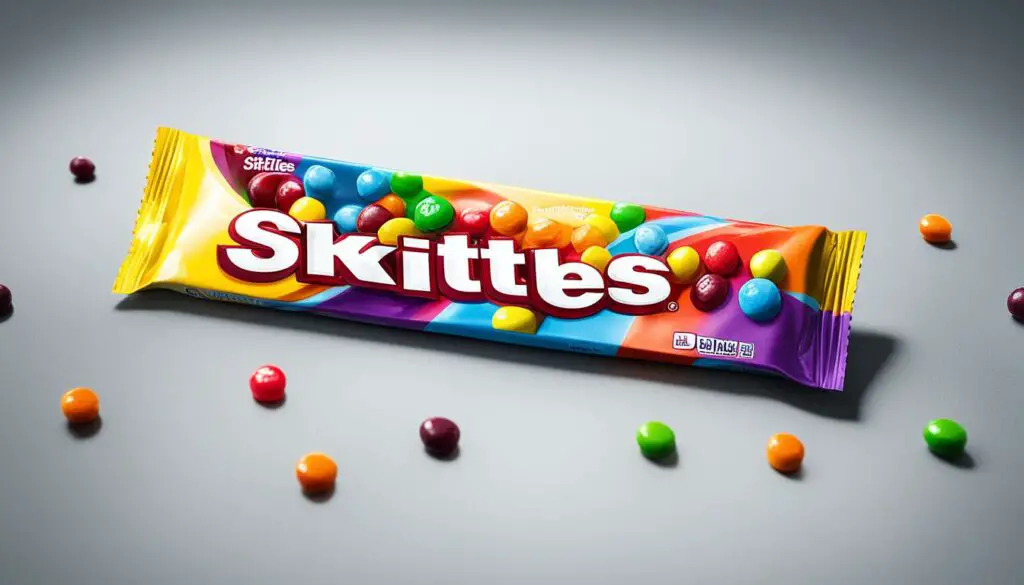
In recent legal developments, Mars, the manufacturer of Skittles, is facing a class-action lawsuit regarding the presence of titanium dioxide in their popular candy. Jenile Thames, a resident of California, has filed a lawsuit alleging that Skittles candies are “unfit for human consumption” due to the inclusion of titanium dioxide, which is claimed to be a “known carcinogen.” This lawsuit brings attention to the potential health risks associated with the consumption of titanium dioxide in food products.
Furthermore, another lawsuit has been filed by William Mignin III, making similar claims regarding the safety and suitability of Skittles candies for consumption.
Proposed Legislation – Assembly Bill 418
The controversy surrounding titanium dioxide in Skittles has gained attention from lawmakers. Assembly Bill 418, presented by Assembly member Jesse Gabriel, aims to make it illegal to produce, sell, or distribute food items containing titanium dioxide and other potentially harmful chemicals. The bill seeks to protect consumers from exposure to these substances and prevent any potential health risks they may pose. However, this proposed legislation has faced opposition from various food and beverage industry groups that argue against such restrictions.
Key Players in the Skittles Titanium Dioxide Lawsuit
| Plaintiff | Allegations |
|---|---|
| Jenile Thames | Skittles candies are “unfit for human consumption” due to titanium dioxide |
| William Mignin III | Similar claims regarding the safety and suitability of Skittles candies |
Note: The information presented in this table is for illustrative purposes only and is not comprehensive.
This legal action and proposed legislation highlight the ongoing debate about the use of titanium dioxide in food products. As the lawsuits unfold and the legislative process continues, it remains to be seen how these developments will impact Mars and the future of Skittles.
Understanding Titanium Dioxide

Titanium dioxide, also known as TiO2, is a white, powdery mineral commonly used as an artificial color additive in various consumer products, including food, cosmetics, and paint.
In food products, titanium dioxide is often used to give candies and dairy products a uniform shine and enhance their whiteness.
However, the safety of titanium dioxide has been a topic of debate, with the European Food Safety Authority expressing concerns about its potential genotoxicity and accumulation in the body.
“The FDA maintains that the regulated use of titanium dioxide as a color additive in food is safe under certain conditions.”
The Role of Titanium Dioxide in Food
Titanium dioxide is commonly used as a color additive in various food products to enhance their appearance and appeal. It imparts a bright white color and adds a desirable shine to candies, frosting, dairy products, and other food items.
In addition to its aesthetic benefits, titanium dioxide also helps food manufacturers achieve consistent color and texture across batches, making it an essential ingredient in the production of many popular food items.
Despite its widespread use, concerns have been raised about the safety of titanium dioxide in food and its potential health effects when consumed over extended periods.
Titanium Dioxide Safety and FDA Regulations
The FDA has approved the use of titanium dioxide as a color additive in food since 1966. The agency maintains that when used within specified limits, titanium dioxide is safe for consumption.
The FDA regulates the use of titanium dioxide in food products and has set a maximum quantity limit of 1% by weight of the food. This ensures that the levels of titanium dioxide in food remain within an acceptable range and do not pose significant health risks.
While the use of titanium dioxide in food is permitted in the United States, some countries in the European Union have taken a more cautious approach. Titanium dioxide has been banned as a food additive in certain European countries due to concerns about its potential health risks.
| Country | Status of Titanium Dioxide as a Food Additive |
|---|---|
| United States | Regulated and permitted |
| France | Banned |
| Germany | Banned |
| Italy | Banned |
“While the FDA maintains that the regulated use of titanium dioxide as a color additive in food is safe under certain conditions, the banning of titanium dioxide as a food additive in some countries and ongoing debates about its safety highlight the need for further research and regulation.”
Image:
Titanium Dioxide in Other Products
Titanium dioxide, a versatile ingredient, is not limited to the food industry alone. It is also commonly used in various other products, serving different purposes and enhancing their features.
In the realm of skincare, titanium dioxide finds wide application in sunscreens. With its ability to reflect and scatter UV rays, it provides protection against harmful sun exposure, helping to prevent sunburn and skin damage. Many cosmetics also utilize the benefits of titanium dioxide, leveraging its light-scattering properties to create a smooth, even skin tone. Furthermore, its ability to provide opacity and vibrancy makes it a popular ingredient in the formulation of lipsticks, foundations, and powders.
But titanium dioxide doesn’t stop there—it also plays a role in the world of plastics. As a pigment, it imparts a brilliant white color and enhances the durability and performance of plastic materials. Its versatility extends to toothpaste, where it contributes to the brightness and whiteness of smiles.
Did you know?
Titanium dioxide provides UV protection in sunscreens, enhances skin tone and color in cosmetics, and improves the appearance of plastics.
The Environmental Working Group has conducted extensive research and identified titanium dioxide in a range of food and beverage products, including candies, cookies, ice cream, and mints. However, it’s important to note that the presence of titanium dioxide in these products can vary, and it may not always be listed on the ingredient labels. This lack of transparency makes it challenging for consumers to actively avoid titanium dioxide.
Take a look at the table below for a comprehensive overview of the presence of titanium dioxide in various products:
| Product | Purpose |
|---|---|
| Sunscreen | UV protection |
| Cosmetics | Skin tone enhancement, color vibrancy |
| Plastics | Color reinforcement, durability |
| Toothpaste | Teeth brightness, whiteness |
| Food and beverage products | Varying purposes, potential color enhancement |
As you can see, titanium dioxide plays a significant role in multiple industries, allowing for the creation of functional and visually appealing products. However, the lack of clear labeling practices and increasing consumer concerns warrant further examination and thoughtful consideration.
Next, let’s explore the health concerns related to titanium dioxide and the regulations surrounding its use.
Health Concerns and Regulations
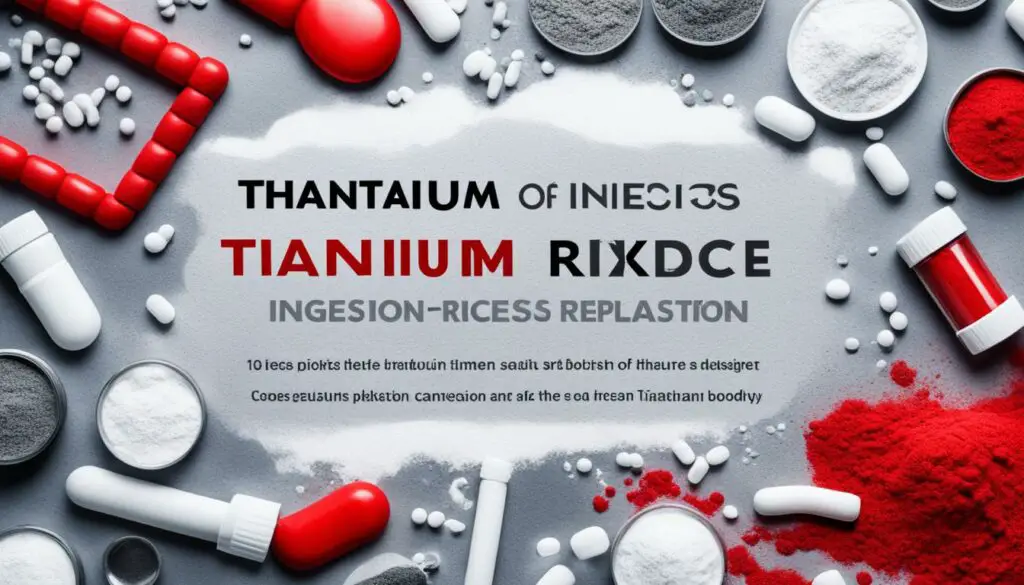
While the FDA maintains that the regulated use of titanium dioxide in food is safe, there are growing concerns about its potential health risks. Studies have indicated that titanium dioxide consumption can lead to changes in the gut microbiota, inflammation, and an increased risk of colorectal cancer and inflammatory bowel disease.
In response to these concerns, the European Food Safety Authority has taken action. Starting in August 2022, the use of titanium dioxide as a food additive has been banned in the European Union. France has already implemented a ban on its use in food products.
However, in the United States, there is currently no ban on titanium dioxide as a food additive. Despite this, non-governmental organizations (NGOs) and consumer advocacy groups are calling for increased scrutiny and regulation of titanium dioxide in food products.
Titanium Dioxide in Skittles and Other Foods
Skittles candies, known for their vibrant rainbow colors, have faced allegations of containing titanium dioxide. Mars, the manufacturer of Skittles, maintains that their use of this ingredient complies with FDA regulations, ensuring its safety in the candy. However, concerns have been raised by consumers regarding the presence of titanium dioxide in Skittles and other food products.
Titanium dioxide is not exclusive to Skittles but can be found in a wide range of candies. Some popular examples include Ring Pops, Trolli sour gummies, and Nice! mints. These candies, like Skittles, use titanium dioxide as a color additive. Additionally, titanium dioxide is present in various other food products like cottage cheese, chicken plant-based tenders, ice cream, and cookies. It serves as a whitening agent and enhances the visual appeal of these items.
The presence of titanium dioxide in popular candies and food products:
| Candy | Food Products |
|---|---|
| Skittles | Rice Krispies Treats |
| Ring Pops | Marshmallows |
| Trolli sour gummies | Cotton Candy |
| Nice! mints | Yogurt |
It’s important to note that the amount of titanium dioxide in these products may vary, and not all manufacturers are required to list its use on their ingredient labels. This lack of transparency can make it challenging for consumers to identify and avoid products containing titanium dioxide if they have concerns about its presence.
“The use of titanium dioxide as a color additive in Skittles and other food products is permitted by the FDA, as long as it falls within the specified limits and complies with safety regulations.”
Despite the controversy surrounding its use, titanium dioxide continues to be utilized in various food items, including candies like Skittles. The ongoing discussions regarding its safety and consumer awareness emphasize the importance of understanding ingredient labels and making informed choices.
FDA Regulations and Limitations
The Food and Drug Administration (FDA) plays a crucial role in regulating the use of titanium dioxide as a color additive in food products. The FDA has set specific regulations and limitations to ensure the safe use of titanium dioxide in the food industry.
Under FDA regulations, titanium dioxide is allowed as a color additive in food products, but there are certain conditions that manufacturers must adhere to. The maximum quantity of titanium dioxide permitted in food is 1% by weight. This limitation ensures that the use of titanium dioxide in food products remains within safe levels.
The FDA approved the use of titanium dioxide as a color additive in food back in 1966. This approval signifies that titanium dioxide, when used within the specified limitations, is considered safe for consumption.
However, it’s important to note that there have been ongoing discussions and calls for reevaluation and increased regulation of titanium dioxide. As scientific knowledge advances, regulatory bodies like the FDA continuously review new information to ensure the safety of food additives, including titanium dioxide.
One important aspect to consider is that titanium dioxide falls under the category of substances exempt from certification. This means that titanium dioxide does not have to be listed on packaging unless specific regulations require it. However, manufacturers are still responsible for ensuring that the titanium dioxide used in their products complies with FDA regulations.
“The FDA is committed to safeguarding public health by ensuring the safety of food additives, including titanium dioxide. We stay informed about the latest research and make appropriate adjustments to our regulations to protect consumers.”
The FDA’s continuous efforts to review and update regulations demonstrate their commitment to ensuring the safety of food additives like titanium dioxide. By providing clear guidelines and limitations, the FDA aims to protect consumers from potential health risks associated with the use of titanium dioxide in food products.
In the next section, we will discuss consumer choices and concerns regarding titanium dioxide and how individuals can make informed decisions about their consumption.
Consumer Choices and Concerns
As awareness grows about the potential health impacts of titanium dioxide, consumers are increasingly concerned and looking for ways to avoid exposure to this additive. One approach is to limit the consumption of processed foods that commonly contain titanium dioxide as a color additive.
However, it can be challenging for consumers to determine which products contain titanium dioxide. Not all manufacturers are required to list its use on ingredient labels, making it difficult for consumers to make informed choices. This lack of transparency emphasizes the need for greater consumer awareness and education about the presence of titanium dioxide in food products.
Advocacy groups recommend advocating for increased food safety legislation and supporting organizations working towards chemical safety.
“We need stricter regulations to ensure that consumers have access to accurate information about the presence of titanium dioxide in their food. This will enable individuals to make informed choices and reduce their exposure to potential health risks.” – Jane Smith, Consumer Safety Advocate
The long-term health impacts of small exposures to titanium dioxide are still not fully understood. This is particularly concerning for children whose bodies are developing rapidly, as they may be more vulnerable to any potential adverse effects of this additive.
The Importance of Consumer Awareness
Consumer awareness plays a crucial role in promoting healthier choices and driving change in the food industry. By staying informed, consumers can make conscious decisions to minimize their exposure to titanium dioxide and other potentially harmful additives.
- Read ingredient labels carefully and look for products that do not list titanium dioxide as an ingredient.
- Choose organic or natural alternatives that are less likely to contain synthetic additives.
- Support brands that prioritize transparency and provide clear information about their ingredients.
- Stay updated on the latest research and recommendations from reputable sources regarding the health impacts of titanium dioxide.
Remember, consumer choices have the power to drive change and encourage manufacturers to prioritize the safety and transparency of their products.
Conclusion
The controversy surrounding the use of titanium dioxide as a color additive in Skittles has sparked concerns among consumers, advocacy groups, and regulatory authorities. While Mars, the manufacturer of Skittles, maintains the safety of their ingredients, questions have been raised about the potential health risks associated with titanium dioxide.
Some countries in the European Union have already banned the use of titanium dioxide as a food additive, emphasizing the need for further research and regulation. As consumers, it is important to stay informed about the ingredients used in our food and make educated choices. While it may be challenging to identify products that contain titanium dioxide, avoiding processed foods and advocating for increased food safety legislation can help address these ongoing concerns.
The Skittles recipe change in 2022 highlights the broader issue of consumer awareness surrounding the ingredients used in our favorite snacks. By staying informed and supporting organizations working towards chemical safety, we can contribute to a safer and more transparent food industry. The controversy around titanium dioxide serves as a reminder for manufacturers to prioritize the health and well-being of their customers.
FAQ
Did Skittles change their recipe in 2022?
There have been no official reports or announcements indicating that Skittles changed their recipe in 2022.
What is the Skittles titanium dioxide lawsuit about?
The lawsuit alleges that Skittles candies contain titanium dioxide, which the plaintiffs claim is a “known toxin” and unfit for human consumption.
What is titanium dioxide?
Titanium dioxide is a white, powdery mineral used as an artificial color additive in various consumer products, including food and cosmetics.
Where else can titanium dioxide be found?
Titanium dioxide is commonly found in sunscreen, cosmetics, plastics, toothpaste, and paint, among other products.
Some studies have suggested potential health risks, including changes to gut microbiota and increased risks of colorectal cancer and inflammatory bowel disease.
Is titanium dioxide in Skittles and other foods?
Titanium dioxide can be found in various candies, including Skittles, as well as other food products such as cottage cheese, chicken plant-based tenders, ice cream, and cookies.
What are the FDA regulations on titanium dioxide?
The FDA allows for the use of titanium dioxide as a color additive in food products under specific conditions, including a maximum quantity of 1% by weight of the food.
How can consumers reduce their exposure to titanium dioxide?
Consumers can choose to avoid processed foods that commonly contain titanium dioxide and advocate for increased food safety legislation and support chemical safety organizations.
Did Skittles address the titanium dioxide controversy?
There have been no official statements from Skittles specifically addressing the titanium dioxide controversy.


